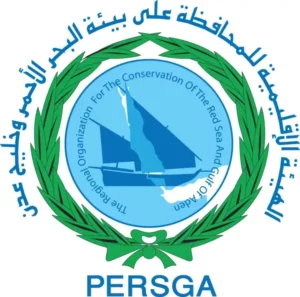Member Type Regional Intergovernmental Organization or Regional Sea
Regional Organization for the Conservation of the Environment of the Red Sea and Gulf of Aden (PERSGA)

PERSGA has issued a Regional Action Plan (RAP) for the conservation of coral reefs in the Red Sea and Gulf of Aden Region. This RAP contains priority actions with these major objectives:
- Integrated Coastal Zone Management;
- Education and awareness;
- Marine Protected Areas (MPAs);
- Ecological Sustainable Reef Fisheries;
- Impact of Shipping and Marine Pollution; and
- Research, Monitoring and Economic Valuation
The RAP addressed specific actions, expected results and performance indicators and quality assurance through a set of priority actions for the conservation and sustainable development of coral reefs in the Region. The Plan was developed in recognition of the great economic, ecological, and aesthetic importance that these ecosystems provide and in response to the serious existing threats posed by increasing human and natural impacts. Many of the region’s reefs are growing near the climatic extremes of reef development and are particularly vulnerable to any increase in disturbance. The seriousness of the threat was demonstrated by major coral reef bleaching in 1997 and 1998, causing massive death of corals and other reef organisms in the Gulf of Aden and parts of the Red Sea. Over the next several decades, predicted increases in these disturbances may cause major disruptions in reef function and the loss of associated resources for human use.
Given the differences in priorities, capacities and other aspects among the RSGA countries, the RAPs needed to be adapted to suit each particular country. Therefore national action plans (NAPs) were developed for the countries, to facilitate the implementation of actions at the national level. This is achieved by identifying national stakeholders, mechanisms, institutions, etc., and integrating the RAP activities into the existing national ICZM plans. In individual countries, implementation will occur through integrated networks of national and local working groups, government departments, agencies and personnel, non-governmental organisations and other stakeholders. Therefore, NAPs provide a set of priority actions for the conservation and sustainable development of coral reefs taken into consideration the priorities of the concerned country.
The implementation of NAPs and RAPs in the Region varied according to the national capacities, constraints and priorities. However, the support of international agencies and donors is much appreciated to assist in overcoming these constraints. PERSGA has integrated the implementation of RAPs and NAPs into the 2004–2014 strategic plan and established an On-Ground Activities Programme to directly support the implementation of NAPs according to resource availability. From On the Ground Activities, PERSGA installed morning buoys to conserve the submerged reefs along the Red Sea.
Related website:
World Heritage Sites
Sites with Coral Reefs: 2
- Socotra Archipelago (Yemen)
- Dungonab Bay-Sanganeb Atoll (Sudan)
Man and the Biosphere (MAB)
Sites with Coral Reefs: 1
Dungonab Bay-Sanganeb Atoll (Sudan)
Last Updated: 21 June 2024